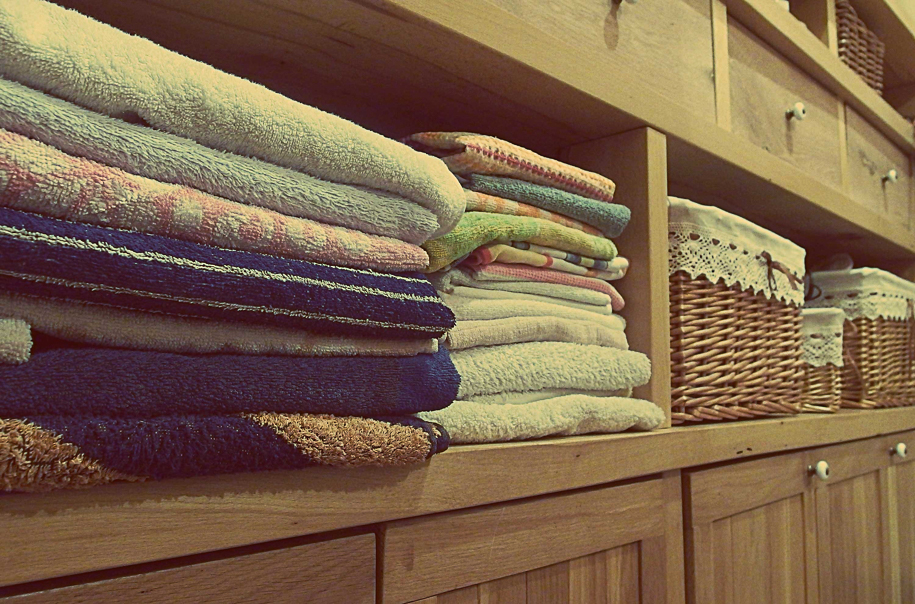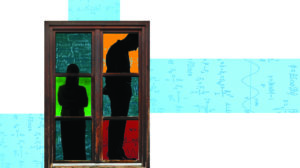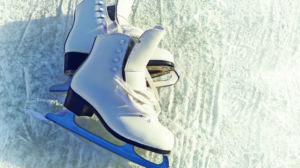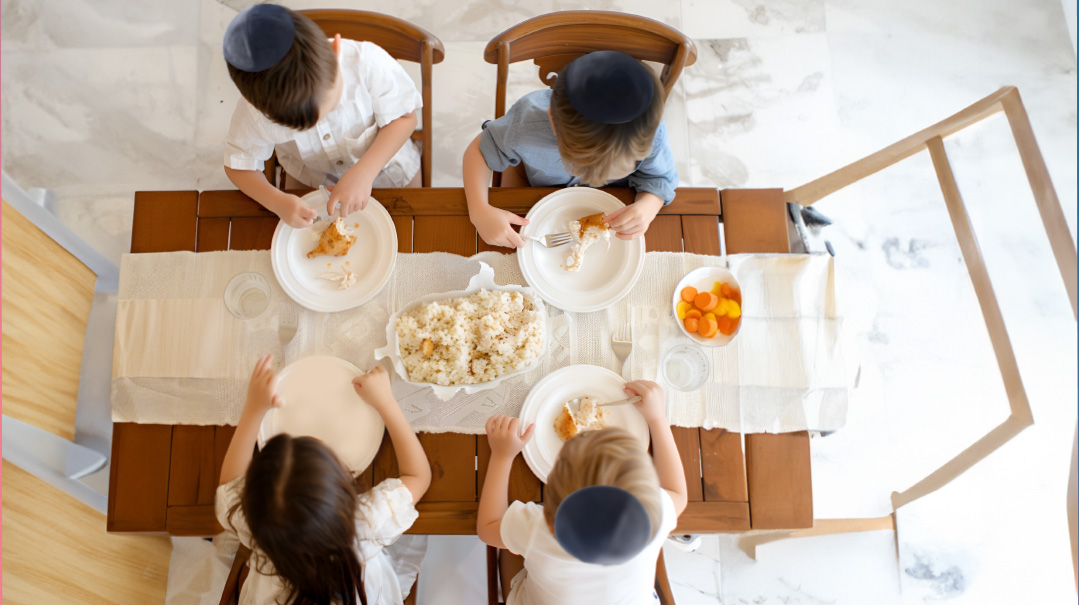Laundry Wars
| February 3, 2016When I got married, I quickly learned there was an art to washing clothes — and I was no master.


As a newlywed millennial, I viewed the washing machine like a microwave, computer, or any other electronic device — press a button and voilà! Or, in this case, put the clothes in, turn the dial, and then press a button. An hour later, the clothes are clean, but wet. But not to worry — that’s a solvable problem! Throw them in the next machine and press a button. Within an hour, the clothes are clean and dry. Success! Or so I thought.
After a few weeks of marriage, my husband approached me. “You know, my grandmother lives nearby and she’s bored during the day. Maybe she could do our laundry?” I knew that I wasn’t necessarily talented at doing laundry, but the clothes were technically clean — and that was good enough for me. Grandma would not be doing our laundry, I told my husband.
Fast forward a few years. As my children graduated from wearing onesies 24/7 to normal clothes (that were, in theory, supposed to last a whole year), I soon realized that asking Grandma for a few pointers might have been a good idea, after all. My clothing situation was truly a mess — the whites were gray and spotted, the dark colored sweaters were fading and had little fuzzy balls everywhere, and the brand-new outfits lasted only a few washes before becoming dingy and a few sizes smaller.
Before we ran out of clothes entirely, I decided it was time to tackle my laundry problem once and for all. The first step was getting a proper education from women who had truly mastered the art of laundry.
THE SECRET’S IN THE SORTING
Even laundry rookies like myself know you should separate your “lights” from “darks.” And sure, when I had the time, I dutifully followed this all-important rule. But, let’s be honest, usually I didn’t have the time, so I just tossed as much into the washing machine as it could handle.
This, according to homemaking guru Cheryl Mendelson, is a big no-no. In her book, Laundry: The Home Comforts Book of Caring for Clothes and Linens, Mendelson advises sorting into not two but five piles based on colors — whites; lights (almost-whites, yellows, and whites with prints); brights (reds, oranges, and light blues); darks (purples and blues); and very darks (blacks and browns).
But that’s not all. What if, for example, you have one white item that’s “delicate” and another that’s made from 100 percent cotton? Turns out, you should also sort based on which water temperature is best for washing the garment in, since certain fabrics call for certain temperatures. Not to worry, writes Mendelson: If you’re confused, simply look on the clothing label, which clearly tells you hot, cold, or warm water.
Then there are the “read the fine print” kind of rules. For instance, what happens if the “use cold water only” item has a serious stain? A regular cold-water wash won’t cut it, according to Lola Hauser, author of the e-book How To Do Laundry. She advises either washing the clothing for a longer cycle in cold water or letting it soak for a while before washing it.
At this point, I was breaking out in a cold sweat and considering hiring someone to do my laundry. I mean, who has time for all of this? I was bemoaning my fate to my friend Shoshana (and anyone else who would listen) when she insisted that she knew the perfect laundry coach. “My mother is Queen of Laundry,” she told me. “She can get out any stain.” Turns out, Mrs. Greenstein of the Five Towns in New York does indeed know a thing or two about laundering — she’s the owner of a dry cleaning business. Just speaking to her was a comfort; she is living proof that you can actually make sense of this laundry madness. To start, there is a science to washing clothes.
Just like in baking, temperature in laundering can dramatically change the finished product. To keep all my newfound knowledge straight, I created a chart and pasted it next to my washing machine:

When I asked Mrs. Greenstein about sorting, she also gave me a few gems of advice.
- To avoid doing 12 loads for 20 pieces of perfectly sorted clothing, you can combine some of those piles in a cold-water wash, which is safe for any type of fabric (phew!). This especially applies when the “warm water” or “hot water” clothes aren’t that dirty.
- Make sure that certain materials aren’t washed together. “Don’t wash lint givers with lint takers,” Mrs. Greenstein says. For example, sweaters that give off lint shouldn’t be in the same load as synthetic slips that will grab the lint.
- Keep more “germy” items (underwear, socks) away from other clothes. “Socks tend to carry a lot of microbes that you probably don’t want finding their way onto your baby’s onesie,” Mrs. Greenstein says. “From a hygiene perspective, it’s better to wash these items in the hottest temperature they can handle. I also prefer using bleach with these items.” While we’re talking about baby clothes, you should wash and dry those itty-bitty socks in a mesh bag because they can easily clog your pipes.
- As you’re sorting, turn the clothes inside out and make sure all the zippers are up when washing. According to Mrs. Greenstein, when the fabrics agitate in the washing machine, they rub against each other, which damages the fabric over time.
THE GREAT EXPERIMENT
Now that I knew the basics, I was ready for a trial run. My first flash of inspiration came after I saw my friend’s crisp white Shabbos tablecloth. It sparkled and glistened, which surprised me considering how many kids she has.
“New tablecloth?” I asked her.
“Nope, it’s actually six months old.” I was absolutely befuddled.
“But how have you managed to keep it so clean?!”
After all, my tablecloths were, um, let’s just say, they looked well-loved.
“I don’t know,” my friend replied.
“I just use bleach.”
Bleach? Okay, confession time, I didn’t even own bleach (which explained my white laundry woes). The next day, I purchased a bottle. I scanned the directions, and threw a capful into the washing machine with my grape-juice-spotted tablecloth. An hour later, I no longer had a few spots — now I had a bunch of grayish blotches! Turns out, if you pour bleach directly on fabric, you get gray blotches. What I should have done: either put the bleach in the dispenser or pour the bleach into the water, let it mix together, and then put the clothing in the machine.
As I discovered the hard way, you must pretreat stains. And even this is its own science. For instance, if I’m treating a colored shirt, I need to test the stain remover on an inside seam or other hidden part of garment for color fastness (apply the stain remover and let it stand for two to five minutes, then rinse). If the color changes, then, you guessed it, don’t use the remover on that garment. Another piece of advice I picked up: If ketchup (or spit-up, coffee, etc.) stains your blouse, turn the garment inside out and flush the water from the inside. If you attack the stain from the outside, you’re simply pushing the ketchup deeper into the fabric of the clothing.
Even though my first attempt at getting crisp clean whites ended in gray, I decided to try again — this time with all the stained white shirts in my family’s collection. Now that I was no longer a novice, I pretreated the stains. While some stain removers allow the treatment to sit for multiple days, mine specified that it must be washed out within ten minutes, max. (Make sure you read your stain remover’s directions!) While everyone has their own method, Mrs. Greenstein advised me to wash the whites in hot water with chlorine bleach. But using chlorine bleach is no simple task, she warned me. There are a lot of rules when it comes to using bleach:
1. Read the directions — on the washing machine, the actual bleach container, and clothing tags (certain fabrics can’t tolerate bleach)
2. Pour the bleach into the water before you put the clothing in (remember my now-gray tablecloth).
3. Watch out for oxygen-based detergents, which will counter the effects of chlorine bleach.
Oh no! I gasped as Mrs. Greenstein was talking. I had just pretreated the whites with an oxygen-based stain remover and I was about to add the bleach. But now I realized I couldn’t. I decided to mount a two-pronged attack: first wash the clothes with stain remover and then run another wash with bleach.
The result? The clothes were… drumroll… nice and white! Okay, fine, there were a few barely visible stains, but they were quite old and the only thing that could have helped them were scissors. Definitely a good first attempt!
Mrs. Greenstein left me two additional warnings: always do a second rinse to make sure all the bleach is gone, and let the previously stained clothes air dry. Why? It’s harder to see fainter stains when the clothes are wet. If you put them in the dryer, the stains will set and will be much harder to remove, if not impossible.
Next I tackled a pile of darker clothes. As hard as I’d tried in the past, I could never keep my dark-colored clothes looking vibrant — they always faded after only a few washes. While it’s a bit controversial, I decided to wash the darker clothes on the cold water setting since many sources, including Martha Stewart, agree on this method as it’s the best for keeping color.
Even though frosty winters may mean freezing water (which might make the detergent ineffective), most cold-water temperatures range from 60 to 75 degrees and work just fine, says Pat Slaven, a lead tester at Consumer Reports (WSJ, September 2015).
Another color-saver piece of advice from Slaven: stop washing clean clothes. Before, even if a piece of clothing didn’t have an odor or any stains, or if I’d only worn it for a few hours, I’d still feel the need to run it through the wash. Not anymore! I’ve become a bit more conservative about what gets thrown in the hamper and what goes back in the closet.
THE DO’S & DON’TS OF DRYING
Once there was a young woman who had a dryer. One day, the dryer stopped drying the clothes. “Oh, dear! The dryer is broken!” said the lady as she picked up the phone to call the handyman. Seventy-five dollars later, the lint trap was removed and cleaned out, and the dryer was working again. (No comment on who this woman is!)
After you’ve hard-wired yourself to empty the lint trap after every load, you can move onto the next fundamental drying truism: similar to washing, there isn’t a universal way to dry all clothes. The many beautiful tops I’ve permanently ruined by tossing them into the dryer is a testament to this truth.
Before you mindlessly throw wet clothes into the dryer, first look at the instructions on the garment’s tag. The instructions will tell you how to properly dry the item — or at least get you started in the right direction. For example, swimsuits, sweaters, and delicates should avoid the dryer and instead lie flat to dry.
My first hurdle came after I read “tumble dry low” on a shirt tag. What did that mean — and why wasn’t it on my dryer settings?! Apparently, when the tag tells you to “tumble dry,” it’s a fancy way of saying that the item can go into the dryer.
Which dryer setting should you choose? High heat (timed dry) is best for strong fabrics like towels, sheets, sweats, and denim, according to Mary Leverette, laundry expert on About.com. But stick with simple clothes as this powerful heat can melt designs. Permanent press (low heat) is for almost all clothing — think shirts, blouses, dresses, slacks, jackets, outerwear, even non-cotton socks. The “no heat fluff” setting won’t dry wet clothes. Rather, this cycle is for fluffing pillows and freshening dry-clean only clothes or those that have been stored and smell a bit musty. The good news is that there’s plenty of stuff that can go straight into the dryer.
But, beware, if you’re washing a mammoth load of kids’ clothes and overstuff your dryer, it will take longer to dry everything and your clothes will come out wrinkled. Dryer sheets, as nice as they smell, might also be slowing down your drying time. It seems they coat your dryer with a residue that prevents the sensors from knowing when your clothes are dry.
TAMING THE LAUNDRY MONSTER
Overwhelmed by the Leaning Tower of Dirty Clothes in your laundry room? Every woman has her own strategy for dealing with piles of laundry: the Once-a-Week method, the A-Few-Loads-a-Day method, and the Emergency method.
Chances are, when your husband was a yeshivah bochur, he held by the Emergency method — you only wash the clothes you need for the next day. Newlyweds usually do just fine with the Once-A-Week method, in which one day a week is reserved for doing the few loads of laundry that the young couple has. But as the family grows and the children decide that their shirts are napkins, we end up doing multiple loads every single day.
For those of us in the third category, how can we best manage the never-ending mountain of laundry? Angi Schneider, author of Taming the Laundry Monster, gives a few golden pieces of advice. First and foremost, you have to know your personality and your family dynamics. Some people prefer to isolate one day to focus on laundry, while others don’t mind doing a little bit every day. It depends on what works for you, your schedule, the amount of clothing you have, and — if your family is helping you — what works for them too.
What about mothers with 8, 10, or 12 children? Aside from hiring help or training the kids, how do these families deal with laundry? Shira Klatzko Freedman — one of 11 kids — relates that her mother literally spent the entire day going back and forth to the washing machine and dryer. “She’d run to the grocery store and then put in a load. She’d wash the kitchen and then put in a load. She’d make supper, then fold a load. No matter what was going on in the day, there were always five-minute pauses to switch laundry and make sure it kept moving.”
Personally, I sort my clothing according to color and water temperature (remember, you can wash “warm water only” clothing with your “cold water only” clothing, if need be). Then, once I have a pile that’s at least a few pieces, I’ll launder it from beginning to end. Even though doing smaller loads might not be as cost-effective, I’m personally overwhelmed by mega piles of laundry. Besides, aren’t I saving money by laundering my clothes carefully?!
Schneider also suggests some “make life easier” tips, such as: buy the same color and type of sock for every kid so you’re not spending lots of time trying to match up pairs; avoid the iron by misting shirts and hanging them to dry to release wrinkles; and simplify your wardrobe options so most of your clothing is washer/dryer friendly.
Now that my “laundry investigation” has technically come to a successful close, I’ve discovered that cleaning clothes is kind of… maybe… enjoyable and satisfying. I’ve already noticed a big difference in everything from my sweaters (which are the same size that I bought them) to my sons’ Shabbos shirts (which are a beautiful shade of white instead of gray). I guess the proof is in the pudding… or the lack thereof on the shirt. “So,” my husband recently asked, “when are you going to do a ‘gourmet food investigation’?”
(Originally featured in Family First)
Oops! We could not locate your form.













